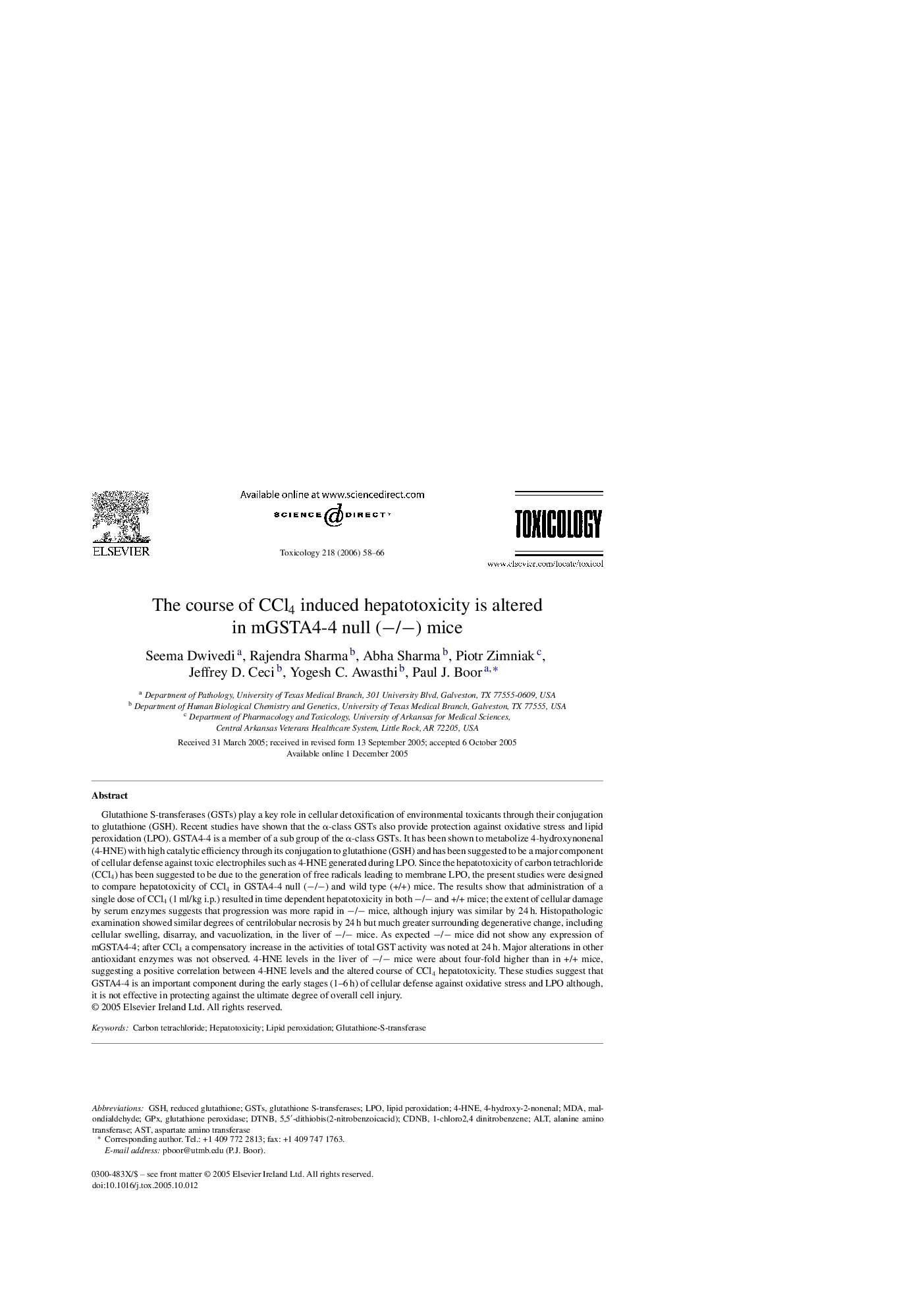| Article ID | Journal | Published Year | Pages | File Type |
|---|---|---|---|---|
| 2598324 | Toxicology | 2006 | 9 Pages |
Glutathione S-transferases (GSTs) play a key role in cellular detoxification of environmental toxicants through their conjugation to glutathione (GSH). Recent studies have shown that the α-class GSTs also provide protection against oxidative stress and lipid peroxidation (LPO). GSTA4-4 is a member of a sub group of the α-class GSTs. It has been shown to metabolize 4-hydroxynonenal (4-HNE) with high catalytic efficiency through its conjugation to glutathione (GSH) and has been suggested to be a major component of cellular defense against toxic electrophiles such as 4-HNE generated during LPO. Since the hepatotoxicity of carbon tetrachloride (CCl4) has been suggested to be due to the generation of free radicals leading to membrane LPO, the present studies were designed to compare hepatotoxicity of CCl4 in GSTA4-4 null (−/−) and wild type (+/+) mice. The results show that administration of a single dose of CCl4 (1 ml/kg i.p.) resulted in time dependent hepatotoxicity in both −/− and +/+ mice; the extent of cellular damage by serum enzymes suggests that progression was more rapid in −/− mice, although injury was similar by 24 h. Histopathologic examination showed similar degrees of centrilobular necrosis by 24 h but much greater surrounding degenerative change, including cellular swelling, disarray, and vacuolization, in the liver of −/− mice. As expected −/− mice did not show any expression of mGSTA4-4; after CCl4 a compensatory increase in the activities of total GST activity was noted at 24 h. Major alterations in other antioxidant enzymes was not observed. 4-HNE levels in the liver of −/− mice were about four-fold higher than in +/+ mice, suggesting a positive correlation between 4-HNE levels and the altered course of CCl4 hepatotoxicity. These studies suggest that GSTA4-4 is an important component during the early stages (1–6 h) of cellular defense against oxidative stress and LPO although, it is not effective in protecting against the ultimate degree of overall cell injury.
